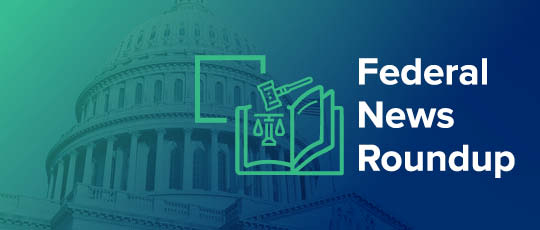Less than a year ago, we were talking about the “future of work” as just that — set in a distant future. But disruption from COVID-19 has accelerated the pace of change, and more than 80% of executives are moving forward with plans to digitize work, and 50% of employers plan to automate roles sooner than they originally planned, according to World Economic Forum research. Ready or not, the future of work has arrived.
So, what does that mean for learning outcomes at work? Innovations in technology and regulatory changes are reshaping our work at an unprecedented speed. The technical skills we learned five years ago are nearly obsolete, and the demands on our soft skills escalate every day. Many companies slashed L&D budgets during the shutdown, but organizations are realizing that continuous learning is the difference between surviving and thriving in a post-COVID economy. And thriving in this environment will require an investment in continuous learning, both for our workforces at large and for us as HR professionals.
Your professional experiences in 2020 likely taught you plenty while revealing gaps in your knowledge. Here is how to bridge those gaps through L&D infra- structure at an organizational level so your business has the right skills in place to meet the future.
Create a Learning Road Map
Just like we use scenario planning to preserve business continuity in a future filled with uncertainty, we need to develop organizational learning plans to preserve our agility. We must prepare to lead our organizations through all sorts of challenges. Of course, no one knows what the future holds, but we can study trends in automation, the economy and consumer needs, and then intelligently speculate about what lies ahead. This kind of scenario planning helps us anticipate our future talent needs and thoughtfully consider how to reskill the workforce to meet them.
HR professionals must play a leadership role in developing these plans, as we are best positioned to manage the people side of these equations. By investing our time in scenario planning and creating a learning road map, we can protect our organizations from outdated roles and gaps in skills. You can have the same person stay in a job but become a poor fit over time if their skills languish. Mitigate that risk by mapping out the roles you will likely need over the next three, six and 12 months, and proactively consider the skill sets your people will need in a changing global economy. Some of these may be new to your organization or to specific roles, such as data analytics or design thinking. Others will feel more timeless, such as adaptive leadership and critical thinking.
Choose a potential scenario to prepare your workforce to meet. How would your organization have to evolve to thrive in those circumstances? Is your workforce ready to work along- side automation and artificial intelligence-driven technology, for example? Then, work together to identify three concrete goals you would have to meet to prepare for that scenario. One goal might be to reskill employees, their roles displaced by automation, to work in more hands-on parts of the business, for instance. What skills do those employees already have, and where would they be most useful in your organization? Employees operating heavy machinery often have backgrounds in engineering, for instance. Consider, for example, how valuable logistical thinkers could be in revamping workflows or restructuring supply chains.
Next, evaluate your existing learning infrastructure’s ability to meet this goal. Do you have existing training programs or access to courses to refine an employee’s skills? What about interdepartmental mentorship or peer-to-peer learning opportunities? If you do not have programs like these already in place, it is time to develop them.
Remember that these plans need to be agile. If we learned anything from 2020, it is to expect the unexpected. Change is a constant at work, so we need to consistently re-evaluate our learning road map to test its relevance and efficacy. Is in-house training not resonating with your workforce, for instance? It could be too narrow in scope.
Maybe your employees need to see learning outcomes set in a broader context if they are to connect them to their individual organizational purpose. A solution might be to revamp your learning road map by partnering with a learning organization to offer more meaningful, well-rounded courses.
Identify Individual Learning Pathways
Once you have laid out the big-picture road map, focus on cascading those learning goals down to individual path- ways. The most effective way to do this is to tap into your existing performance management infrastructure. Review your process for managing internal talent.
Are you accurately capturing individual contributors’ unique skills, talents and experiences? Does your system create opportunities for high performers with diverse backgrounds? Help direct managers understand where their employees need to continue developing and what resources are available to help employees get there.
Employee goal setting has not always been a strategic process, but it should be. Imagine how much more powerful our human capital could be when individual goals are aligned with company strategy, harnessing each employee’s skills and talents to meet ambitious goals.
We all have the opportunity to become more efficient and effective, but that starts with better planning — especially at the management level. Create more effective performance goals by aligning them with targeted, specific learning outcomes.
Job descriptions are important, too, but they merely lay out the minimum expectations for a role and are subject to change as business needs evolve. What projects could you assign an employee with a particular job description that differentiate their skill set from that of their peers? Help direct managers identify projects that would allow employees to develop their skills in more meaningful ways.
Align employee performance goals with their professional development goals. What gaps do employees have in their skill sets? Identify projects that allow employees to exercise and hone their weakest skills. Employee performance goals should develop employees while also moving the organization forward. In performance management conversations, encourage managers to address weaknesses directly, but make sure they put a plan in place to overcome them.
Make learning accessible through virtual talent development resources. Learning management systems are among the key areas that organizations plan to upgrade or replace in response to the pandemic, the 2020-2021 HR Systems Survey by Sapient Insights found. Talk to your colleagues about developing virtual mentorships and online feedback processes for your up-and-coming talent.
And be sure that valuable talent is not being left behind because they are not receiving equal opportunities. A team of Stanford University researchers found women employees tend to receive vaguer and less actionable feedback than their male peers, which can potentially cost women opportunities to develop and grow. Do not leave talent on the table: Embed a process for providing specific and equitable learning opportunities to each employee.
Invest in Future-Proofing Your HR Function
With the rapid pace of change, staying on top of your industry education is essential. A narrow knowledge base cannot sustain growth. New skills gaps open every day, and constant learning bridges those gaps. In a world where roles and skills are more interconnected than ever, we need to go a step further and certify our understanding of business outside of our vertical — and understand the role our profession can play in supporting business achievements.
Before you can pivot, you have to lay a broad foundation of knowledge. An HRCI® certification assesses knowledge and experience and provides the wider groundwork you need to support agility in your workplace. Take your HR knowledge to the next level and look to professional certifications to provide the blueprint for your success.
As a certifying body, we are constantly monitoring changes in work. We hold our certification process and materials to the highest standards and can guarantee that anyone displaying our letters is a well-rounded, adaptable and up-to-date HR professional. At a time when the future is harder than ever to predict, that guarantee could be the key to future-proofing your HR strategy.
HR as a profession has been impacted heavily by the pandemic. And there is still a lot to learn. We predict that organizations will set a high value on senior-level certifications, such as the Senior Professional in Human Resources® (SPHR®), that emphasize how specific HR operations strategically support the business.
An ability to thrive in an increasingly global workforce will be in high demand with certifications that signal international acumen, such as the Global Professional in Human Resources® (GPHR®) certification. Workplaces are becoming more distributed, and your organization may be working with employees or freelancers from all over the world. Having an HR team that understands different components of labor laws and work processes as they apply to different cultures and backgrounds is essential for success.
Start a certification campaign for your team. Professional certification takes your HR department to the next level and propels your organization forward. As the nature of work evolves, the need for continuous learning is only going to grow. Are you prepared to start your team’s certification journey?
"Having an HR team that understands different components of labor laws and work processes as they apply to different cultures and backgrounds is essential for business success."







